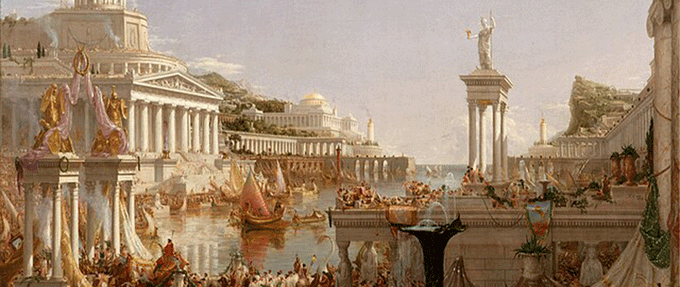Even though the Roman Empire existed long ago, it seems to always be at the forefront of our minds. The civilization lasted for around 2,000 years, making it incredibly difficult to decide where to begin reading about them. From considering the nature of power to the women who paved the way behind the scenes, this guide is essential for both those taking a budding interest in the Roman Empire and professionals.
There is much to be gained from studying this crucial point in history and reevaluating what we think we know—especially for you classicists out there. Often, when considering the past from a new perspective, whether it be the marginalized or an untapped lens, history opens to us in vibrant colors, filling in the gaps of understanding and broadening our ways of thinking.
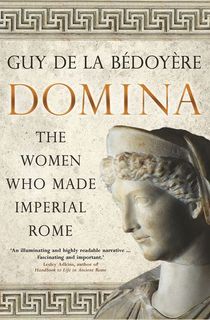
Domina
Most often, the Roman Empire is associated with the domination of men—think Augustus, Tiberius, Caligula, and more. And while they were powerful rulers, none of them was in the bloodline of their predecessor. In this illuminating history, scholar and author of Praetorian, Guy de la Bédoyère, casts light upon the Julio-Claudian women, who, although primarily existing behind the scenes, made it possible for the emperors’ absolute rule to persist.
De la Bédoyère argues that Livia, Octavia, and other women were the true backbone of the Roman dynasty, referencing evidence from ancient Roman historians to support his points. Consider a fascinating time in history from a new perspective, shifting from “the exploits of its male emperors,” to instead examine “the women who partnered them in power” (Joann Fletcher, author of The Story of Egypt).

Imperialism, Power, and Identity
Despite many classicists' efforts to reaffirm the effects of imperialism in the Roman Empire as a positive means of civilizing its subjects, scholar David J. Mattingly boldly challenges this perspective. There were many experiences of existing in an empire so vast, whether considering sexual relations and violence or mining and pollution.
Mattingly takes these lenses into account and, while rejecting archaic views of Romanization, considers how the empire’s power influenced the lives of its subjects. Above all, Imperialism, Power, and Identity emphasize the lives of those being ruled, rather than just the rulers.
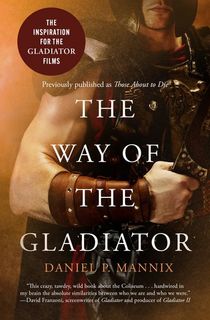
The Way of the Gladiator
In The Way of the Gladiator, which inspired the Gladiator films, award-winning author and journalist Daniel P. Mannix places the games in the exhilarating context of the rise and fall of the Roman Empire.
He considers the scale of the original games, the beginnings of spectatorship, the barbaric conditions that constituted its end, and everything in between. What were once ceremonies intended to honor the Gods, in the end, became nothing but massacres that nevertheless continue to captivate the imaginations of audiences today.
Step into the ring with, as David Franzoni, Academy Award-nominated screenwriter of Gladiator and producer of Gladiator II, describes it, “this crazy, tawdry, wild book about the Coliseum.”
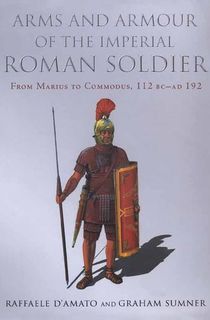
Arms and Armour of the Imperial Roman Soldier
Described by the Bryn Mawr Classical Review as “an impressive achievement” and “a significant contribution to the understanding of the Roman army,” scholars Raffaele D'Amato and Graham Sumner review the many types of armor worn by the Roman soldier.
Combining both written and artistic materials, Arms and Armour offers a comprehensive study of the various materials and equipment used throughout the empire, from region to region. With a “treasure trove of facts and illustrations,” this unmatched visual exploration of a crucial time in military history “is essential reading for any Roman military enthusiast” (Tim Newark, Military Illustrated Magazine).

SPQR
Among its long list of literary achievements, SPQR is a New York Times Notable Book and was named one of the Best Books of the Year by the Wall Street Journal, the Economist, and Kirkus Reviews. In a comprehensive, sweeping account, award-winning classicist Mary Beard narrates the entire history of Rome, ultimately demonstrating why the empire remains significant to us today.
Beard pays particular attention to class and democratic struggles, considering the lives of the entire civilization rather than just the elite minority, while routinely challenging historical assumptions. Told “with passion and without technical jargon,” and described as a “grand sweep [...] that bring[s] the distant past vividly to life,” this is a must-read for those with any sort of interest in the Roman Empire (Wall Street Journal; Economist).
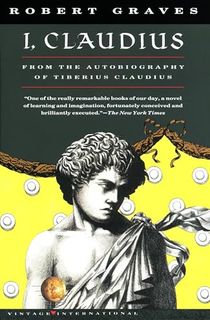
I, Claudius
Written in the form of an autobiography, I, Claudius paints the picture of a young man, dismissed for his limp and stammer, to his unlikely ascension to the throne and emperor. Following the death of Caligula, Claudius, to the shock of everyone, including himself, finds himself in charge of the empire—if he can survive the numerous threats on his life.
Pulling from Plutarch, Suetonius, and Tacitus, classicist and historian Robert Graves narrates this one-of-a-kind story, considering freedom, monarchy, and what it means to be in power. Since adapted into various forms of media—including television, film, theatre, and audio—dive into what was described by the New York Times as “one of the really remarkable books of our day.”

The Lives of the Caesars
In this translation from award-winning author Tom Holland, readers are transported into the dazzling lives of the caesars through the words of Gaius Suetonius Tranquillus from the early 2nd century AD. Suetonius places each Caesar in the context of the other, considering their joint power through history, their success and pitfalls.
Largely considered one of the most influential biographies, this intimate portrait reveals how the emperors came to hold the fate of millions in their hands, through immersive details of a time and culture that has passed—but remains no less significant.
Featured image: Wikimedia Commons
